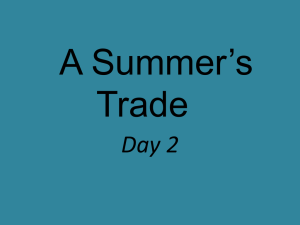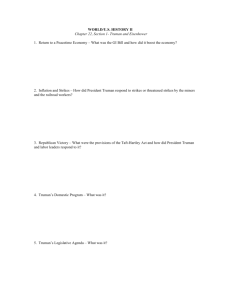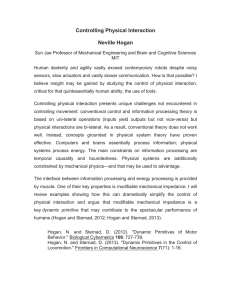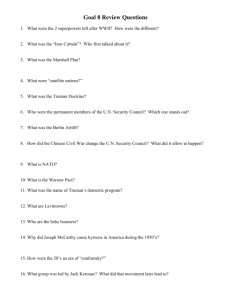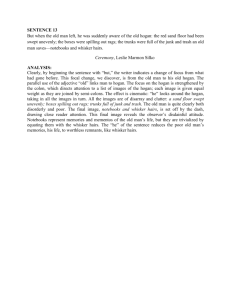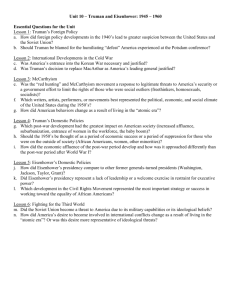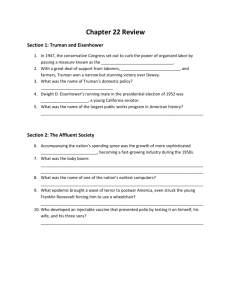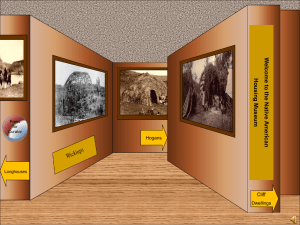Document
advertisement
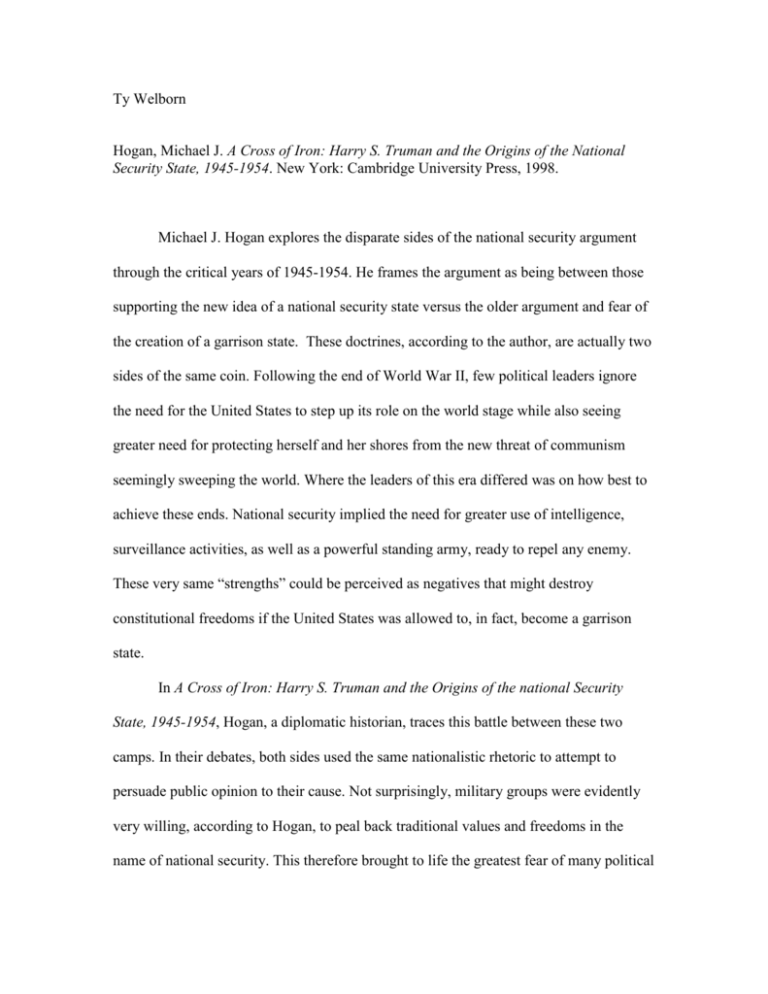
Ty Welborn Hogan, Michael J. A Cross of Iron: Harry S. Truman and the Origins of the National Security State, 1945-1954. New York: Cambridge University Press, 1998. Michael J. Hogan explores the disparate sides of the national security argument through the critical years of 1945-1954. He frames the argument as being between those supporting the new idea of a national security state versus the older argument and fear of the creation of a garrison state. These doctrines, according to the author, are actually two sides of the same coin. Following the end of World War II, few political leaders ignore the need for the United States to step up its role on the world stage while also seeing greater need for protecting herself and her shores from the new threat of communism seemingly sweeping the world. Where the leaders of this era differed was on how best to achieve these ends. National security implied the need for greater use of intelligence, surveillance activities, as well as a powerful standing army, ready to repel any enemy. These very same “strengths” could be perceived as negatives that might destroy constitutional freedoms if the United States was allowed to, in fact, become a garrison state. In A Cross of Iron: Harry S. Truman and the Origins of the national Security State, 1945-1954, Hogan, a diplomatic historian, traces this battle between these two camps. In their debates, both sides used the same nationalistic rhetoric to attempt to persuade public opinion to their cause. Not surprisingly, military groups were evidently very willing, according to Hogan, to peal back traditional values and freedoms in the name of national security. This therefore brought to life the greatest fear of many political leaders. The author argues that this time period saw the creation of the great military juggernaut that we now know well in the United States, and this era also saw the escalation of the Cold War and subsequent arms race. As implied by the title, the author focuses on the Truman administration in this domestic policy study, although Eisenhower is also discussed in great depth. During these years, there was little in the way of “bridge-building” and partisan politics ruled the day. President Truman had a particularly difficult time in balancing the sides of this debate during his administration, and often showed his inability to enforce his will on various parties. No place is this more obvious than in his failure to pass the Universal Military Training (UMT). The views of the various sides were dreadfully incompatible with each other despite the similarity of the rhetoric used, as mentioned earlier. At odds were issues such as balancing the budget, attempting to control skyrocketing military spending, the rise of Communism on the international landscape, and protecting individual freedoms within the United States. The growth of the United States into a world power following the end of Second World War put a great amount of stress on American political leaders. The US now had a role to maintain, whether real or perceived, in this newly restructured world order. At question was how much the American public would have to sacrifice in order to fill this role. Fortunately, few really wanted any sacrifices to be made, although the proposition of programs such as Universal Military Service show that these sacrifices were real and not far from the mainstream consciousness. Arguable this military buildup in response to the Cold War is the historical lead up to the military defense industry that is now in place in the United States, and seemingly so central to our national economy. The Cold War fed the production of military goods and services, and surely even contributed to the creation of the so-called private military firms of the twenty-first century. Not only this, but the Cold War also saw the marshalling of the nation’s universities and other scientific entities for military research and development. Although the Cold War is over, the United States seems to be unable to pull away from the role it has taken on the national stage, or from the defense spending that is necessary to maintain the national security state that we are now used to living within. Michael Hogan uses an impressive array of sources in this dense work. These primary sources range wide, and include the Eisenhower and Truman papers, Eisenhower’s diaries, several other personal memoirs, office records of various federal agencies, and the voluminous amount of paperwork generated by the various committees on national security. Hogan’s writing is somewhat intense at times, but is overall very good. Although an excellently argued book, it is easy to see through to the author’s own opinions at times. Michael Hogan presents a study in which the garrison state fortunately never came to exist. Therefore, one could argue that the national security state did its job in successfully staving off the apparent Cold War threat of Communism. Fortunately it did so without the need to curtail American liberties.
